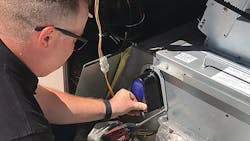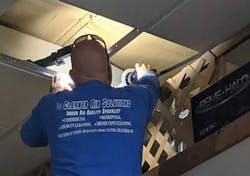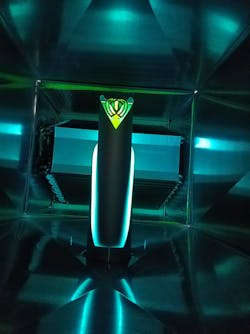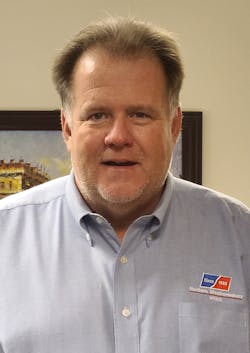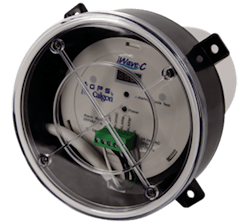Bipolar Ionization and COVID-19, Part 2: Applications
Bipolar ionization (BPI), also called needlepoint bipolar ionization, is an indoor air quality method where air cleaners are installed within HVAC systems to create reactive ions or reactive oxygen species (ROS) in the air. These ions react with airborne contaminants, such as viruses, and clump together, where they are removed from the air via an electrostatic force.
Some restaurant owners see this technology as helping lure patrons back to their establishments once the virus is controlled. Jeff Sauerwein, operations manager at RES (Restaurant Equipment Services) Vegas, notes that BPI technology is well-suited for this clientele base.
Restaurant owners understand that if they want to keep their businesses open, they must look at all their options.
RES Vegas specializes in commercial kitchen equipment repairs as well as HVAC service and repair. As the COVID19 pandemic took hold, the company’s owner, who also owns 10 restaurants, began researching indoor air filtration/quality techniques, Sauerwein says. He was looking for something in addition to PPE to keep his employees and customers safe and healthy.
“Before the pandemic, it was one of those ‘out of sight, out of mind’ things,” explains Sauerwein, a 19-year construction industry veteran. “Until you are hit with something like this pandemic, most people don’t think about air quality.”
But now, he adds, restaurant owners understand that if they want to keep their businesses open, they must look at all their options. “Everyone is looking for ways to stay safe, and business owners are looking for ways to stay open and remain safe,” he says. “BPI technology is a great way for business owners to accomplish both.”
COVID-19 was also the driver for many of Cleaner Air Solutions’ commercial“We installed this technology in a local nursing home; in the two winters since, the facility hasn’t had any flu outbreaks,” he explains. Other clients’ facilities using BPI include schools, office buildings, dental offices and food processing plants.
Reflective electromagnetic energy technology produces hydroperoxide plasma that is distributed through the air handler, through the duct system and into the conditioned living space. The charged plasma induces particles to stick together, making them bigger and easier for a filter to grab and hold.
But the company, established in 2015 as a division of Janesville, Minn.-based A&B Heating and Air Conditioning, also uses the technology in many of its residential customers’ homes. “We sell quite a bit on our residential side and haven’t changed the way we present it to homeowners because of COVID-19,” Ziegler notes. “We just educate them about the technology and the benefits, and then they pretty much sell themselves.”
Installing technicians should learn about air particles and how BPI technology manipulates them in HVAC systems to 99 percent of bacteria, mold and viruses, Sauerwein notes. However, such technology should not take the place of social distancing, hand washing and wearing masks in large groups while the SARS-CoV-2 coronavirus continues to spread rapidly.
Customers Notice Improved IAQ
Cleaner Air Solutions starts with an onsite assessment of the home or building to determine the sizing. Ziegler notes that there are BPI units for “all types of HVAC systems, and the process is a little different for every application.”
Because of the ease of installation, BPI technology can be used in any HVAC system. For RES Vegas’ customers, Sauerwein says one REME HALO is installed in each HVAC unit to eliminate air pollutants in that unit’s ductwork. The more HVAC units, the more BPI units.
RES Vegas technicians take before and after VOC readings and take feedback from the customers themselves. “We hear a lot of positive feedback,” Sauerwein says. “Many clients who suffer from allergies are experiencing relief from those symptoms. Smells are disappearing.”
Ziegler adds: “Most clients will tell you they have noticed a definite difference in the air within a couple of days, sometimes a little longer on some bigger homes and buildings. People with allergies and different breathing issues say they have noticed a significant difference in their condition and have been sick less. Schools have shown a decrease in absenteeism.”
Mike Lee, president, Northern Weathermakers HVAC, Inc., Northbrook, Ill. and its subsidiary, N-Control Inc., says at first he was leery of using any type of ionization product due to concerns over ozone generation, which is an irritant to humans.” A rep introduced Lee to the iWave, which according to iWave, does not create ozone or any harmful byproducts. Then, Lee says, he read about another independent study in a conditioned lab that said iWave works against the COVID virus. iWave is a NuCalgon company. The self-cleaning, bipolar ionization generator is specially designed for light commercial systems up to 12 tons with no maintenance or replacement parts needed. It can be duct-mounted indoors or outdoors, depending on the application.
Northern Weathermakers provides a large amount of commercial HVAC services, and once COVID-19 became acknowledged as a serious problem, the phone started to ring.
Lee says that, short of revamping entire HVAC systems, customers wanted something to offer that would make customers and/or employees feel safer about coming into their buildings. “At that point we started sending the information on the iWave R (residential) and C (commercial) versions and studies conducted on COVID and ozone. We sent it to them, and said it was something we’d recommend, and that we thought would do well, but made it clear that it would not stop person-to-person virus transmission, and it would not stop contact transmission. But we told them it would definitely help with their indoor air quality.”
The units were immediately popular. “We are so busy, separate from the iWave installations, that we almost don’t want to market them because we don’t have the capacity to install them all,” Lee says, which is a nice problem to have.
The iWave unit comes in a small, R version of about 4-in. tall and 4-in. in diameter,Northern Weathermakers installed the iWave in many office buildings, as employers were gearing up to bring employees back to work; in manufacturing settings; in many private schools; and in more than 50 churches, some of which have schools attached to them.
Lee urges other contracting firms to offer proven indoor quality solutions. “At any point in time, if you have a solution for your customer, consider offering it.”
Additional Information
For contractors interested in adding IAQ services to their businesses, bipolar ionization seems to be a good investment for the health and safety of their clients and their customers. To help research the various BPI products and their manufacturers, read Part 1 of this article HERE.
Also, ask questions and talk over concerns with BPI advocates such as Sauerwein and Ziegler. They can give you additional insight as to how this technology has helped their businesses in a time of extreme disruption.
“We have a true passion for this technology and the benefits we have seen it bring our customers,” Ziegler notes. “We spent a lot of time researching and training on this technology. I use it in my own home and business and can vouch for the benefits. I really believe every home and building should include a bipolar ionization solution.”
Kelly Faloon is a contributing writer to Contracting Business magazine. The former editor of Plumbing & Mechanical magazine, she has more than 20 years’ experience in the plumbing and heating industry and B2B publishing. A native of Michigan’s northern Lower Peninsula, Faloon is a journalism graduate of Michigan State University.
Mike Lee interview segment by Terry McIver
About the Author

Kelly L. Faloon
Freelance Writer/Editor
Kelly L. Faloon is a contributing editor and writer to Contracting Business magazine, Contractor and HPAC Engineering. The former editor of Plumbing & Mechanical magazine, Faloon has more than 20 years experience in the plumbing and heating industry. She started a freelance writing and editing business in 2017, where she has a varied clientele.
Faloon spent 3 1/2 years at Supply House Times before joining the Plumbing & Mechanical staff in 2001. Previously, she spent nearly 10 years at CCH/Wolters Kluwer, a publishing firm specializing in business and tax law, where she wore many hats — proofreader, writer/editor for a daily tax publication, and Internal Revenue Code editor.
A native of Michigan’s northern Lower Peninsula, Faloon is a journalism graduate of Michigan State University. You can reach her at [email protected].
Terry McIver
Content Director - CB
As director of content for Contracting Business, he produces daily content and feature articles for CB's 38,000 print subscribers and many more Internet visitors. He has written hundreds, if not two or three, pieces of news, features and contractor profile articles for CB's audience of quality HVACR contractors. He can also be found covering HVACR industry events or visiting with manufacturers and contractors. He also has significant experience in trade show planning.
